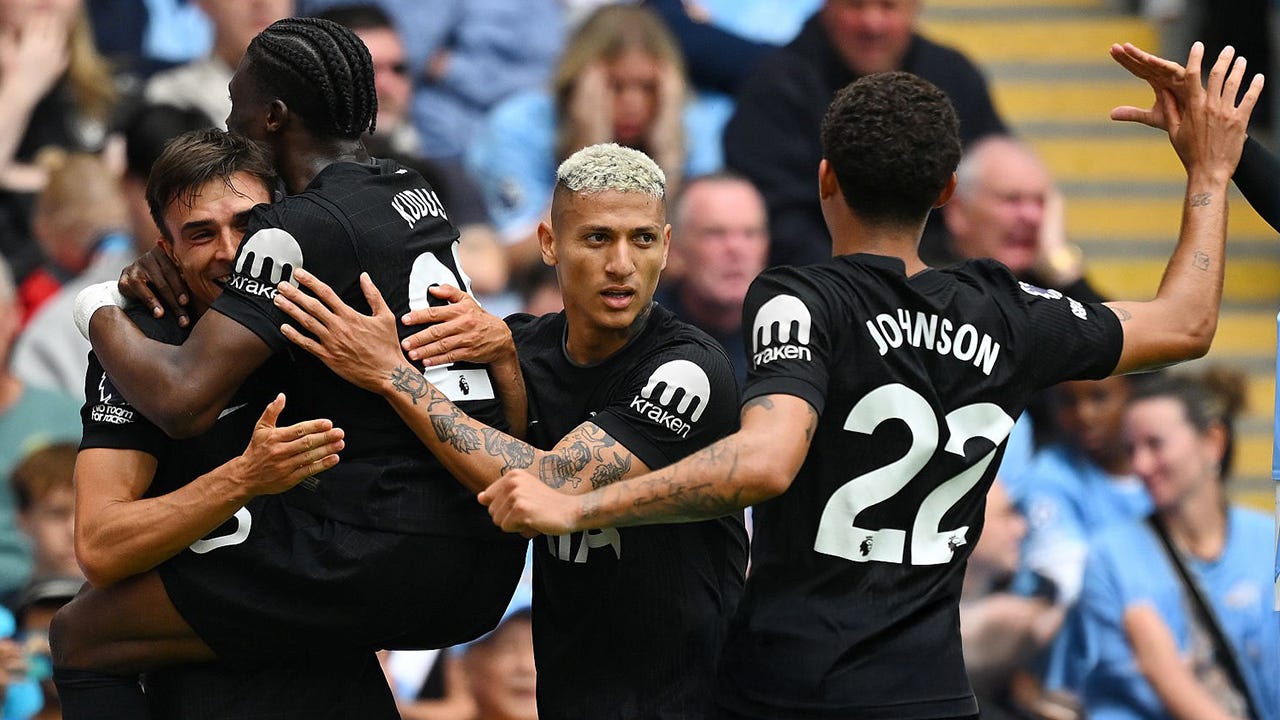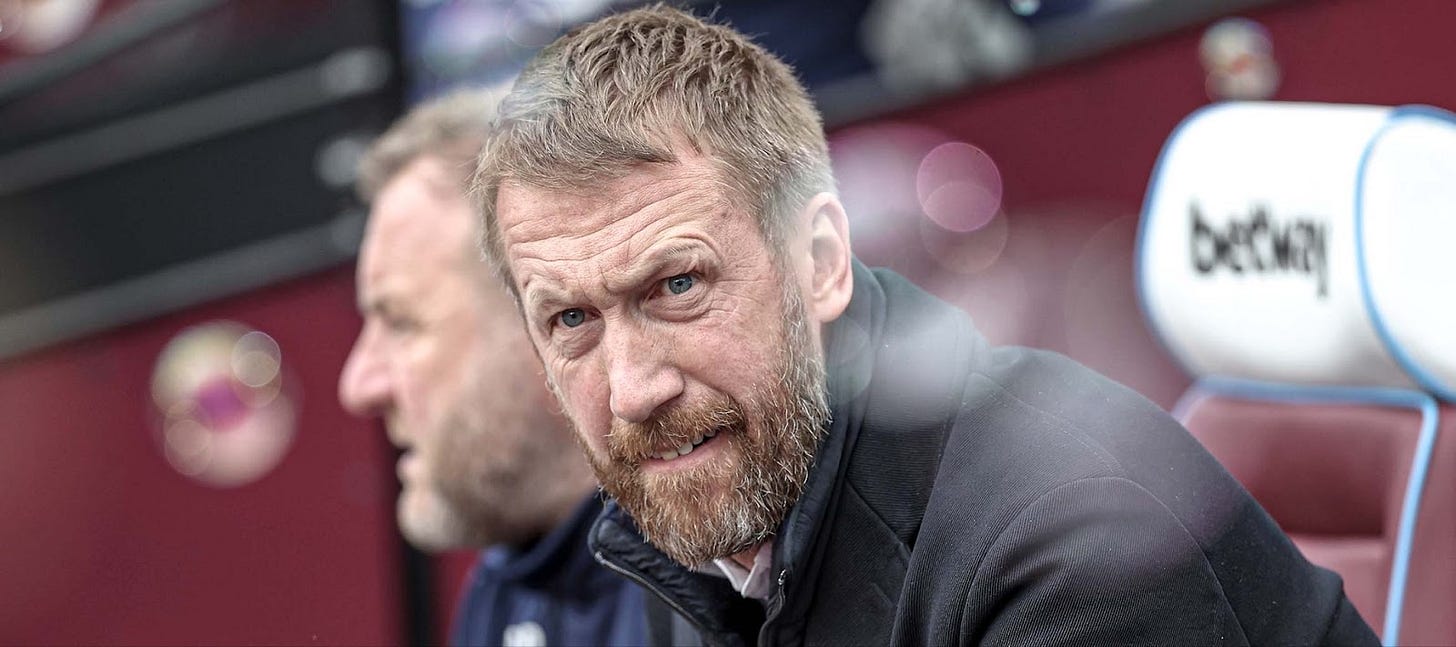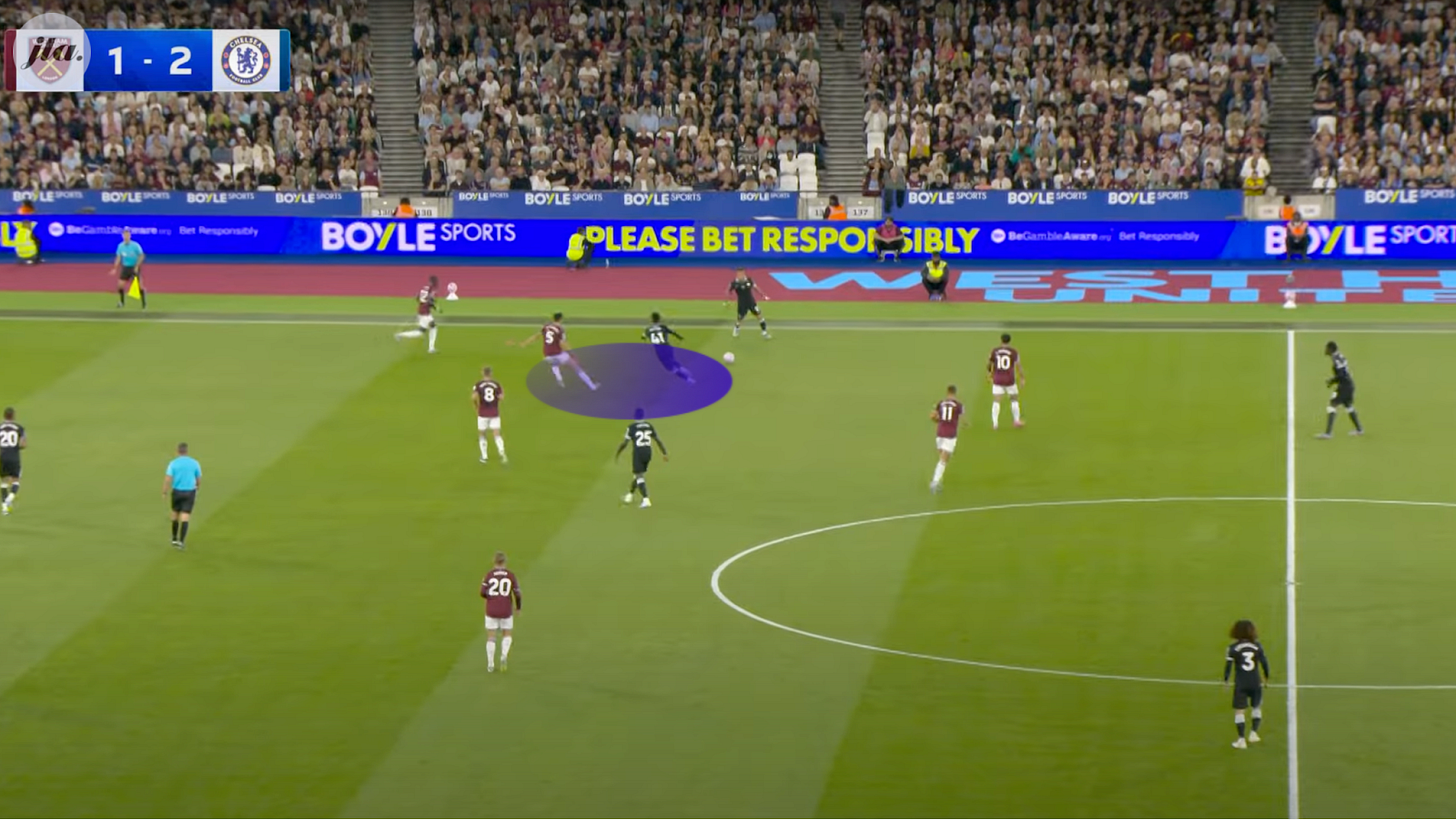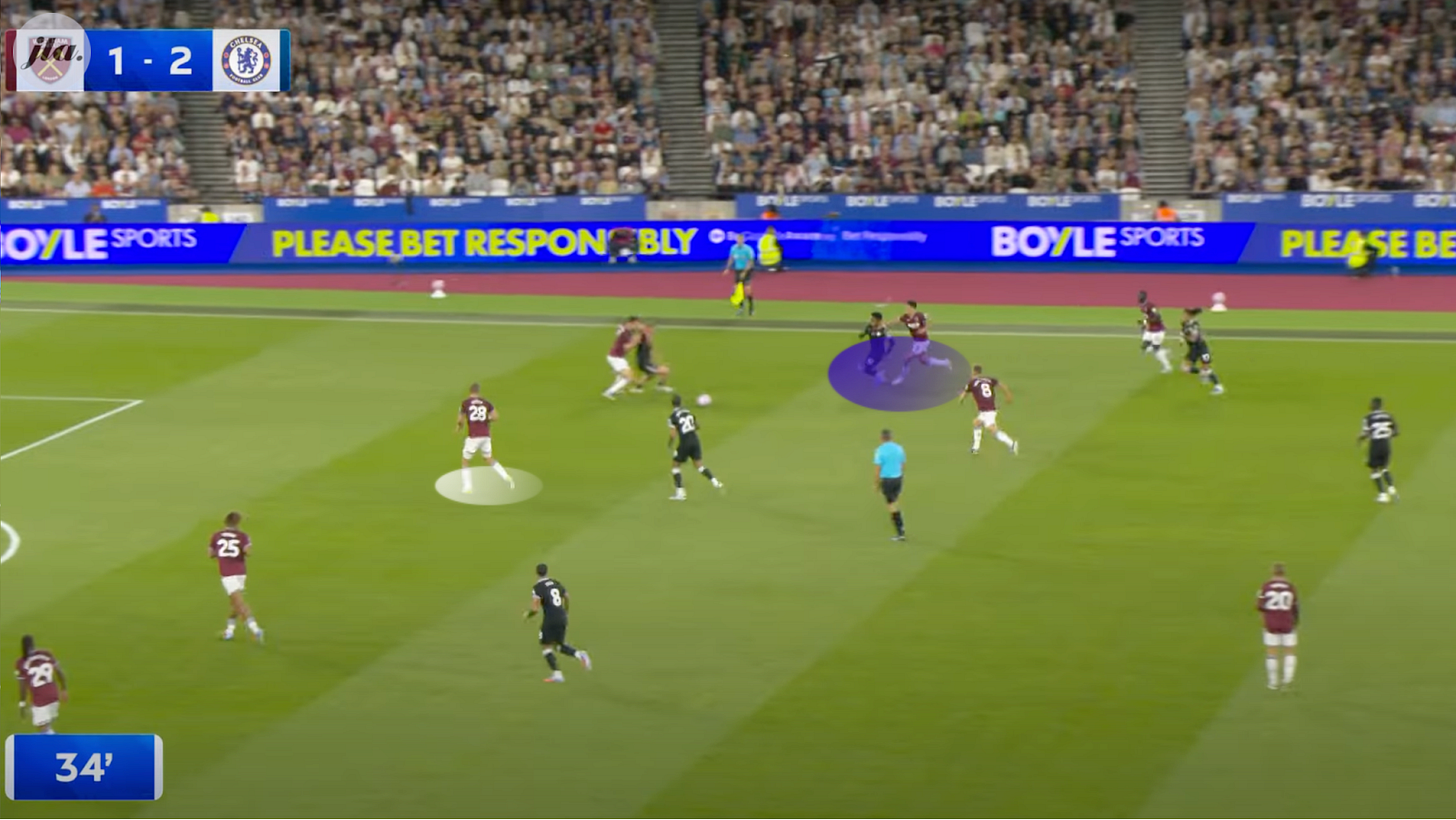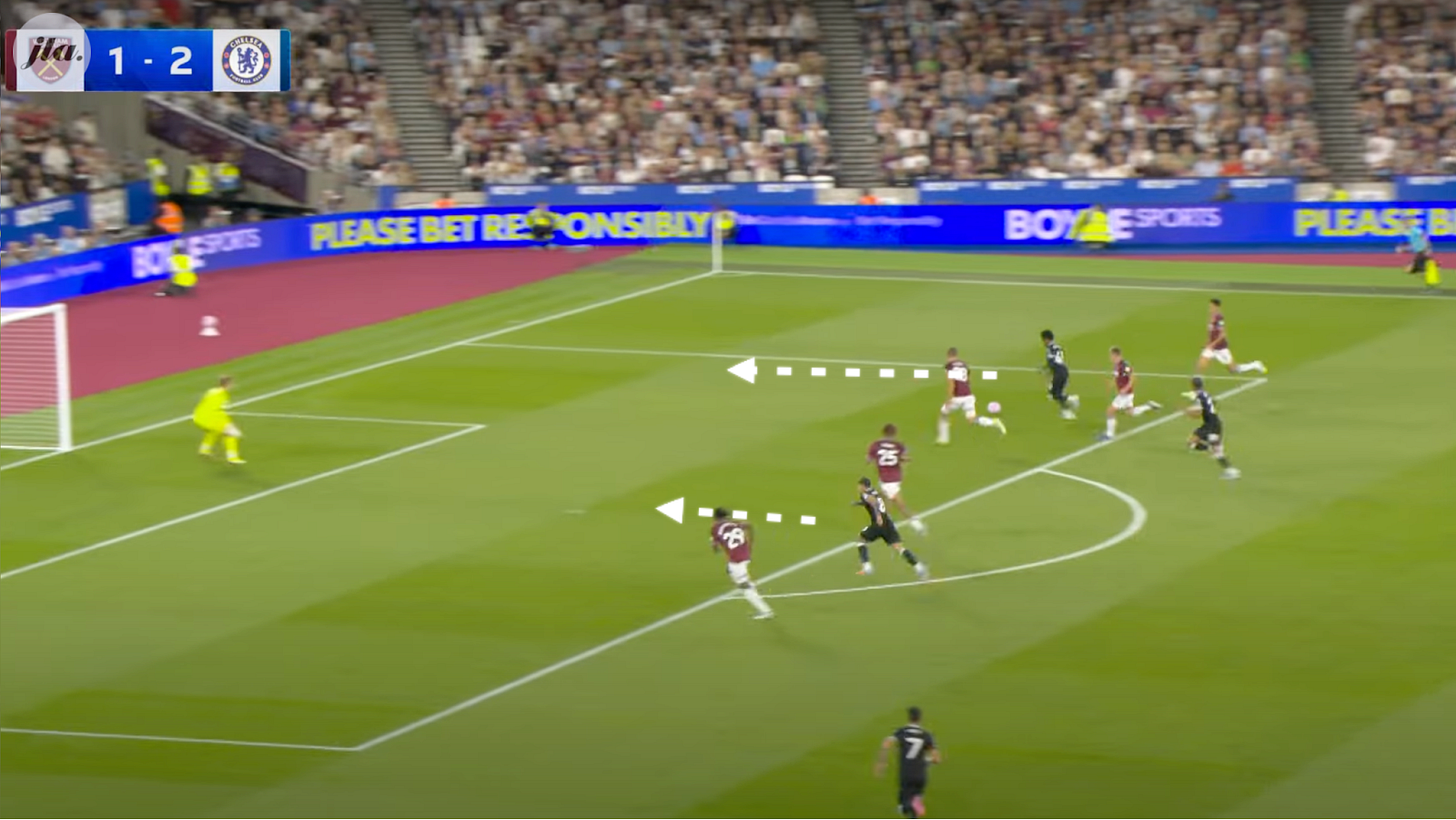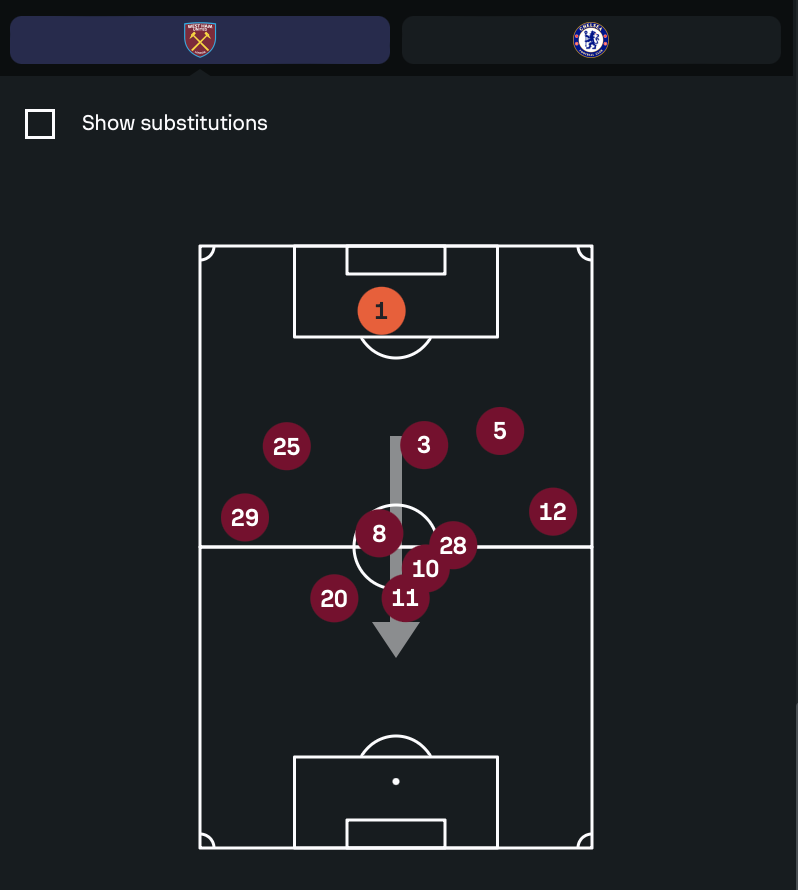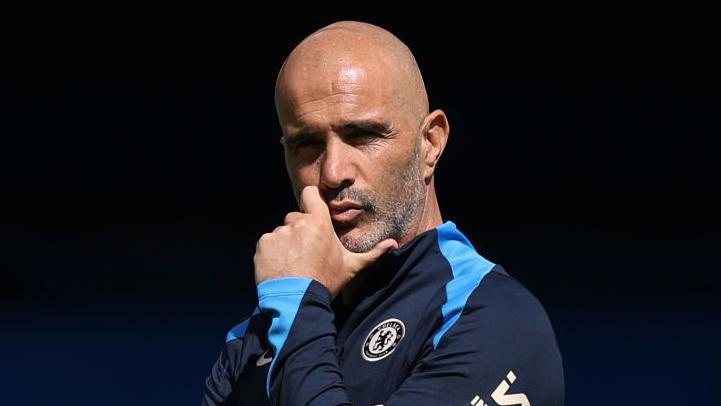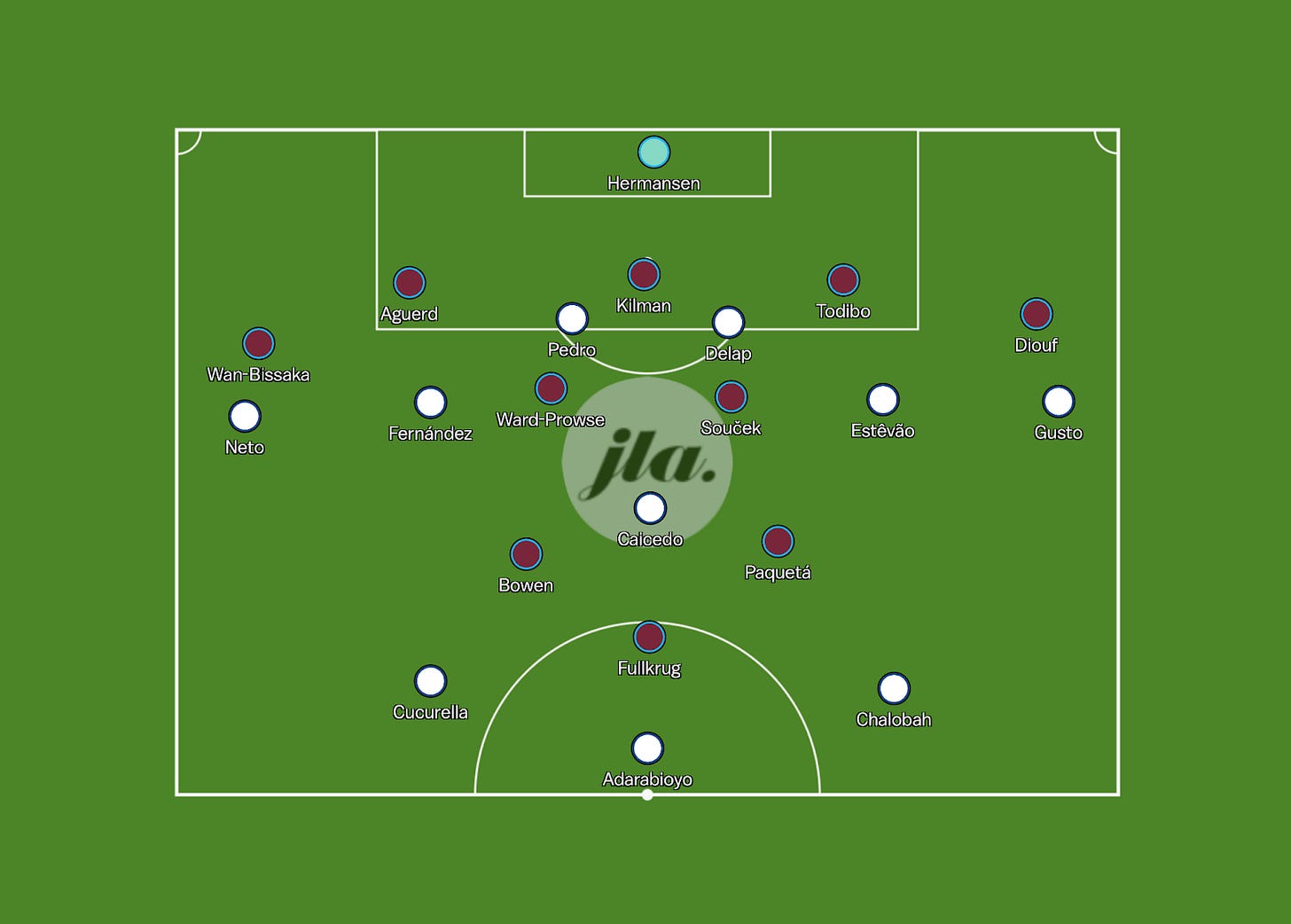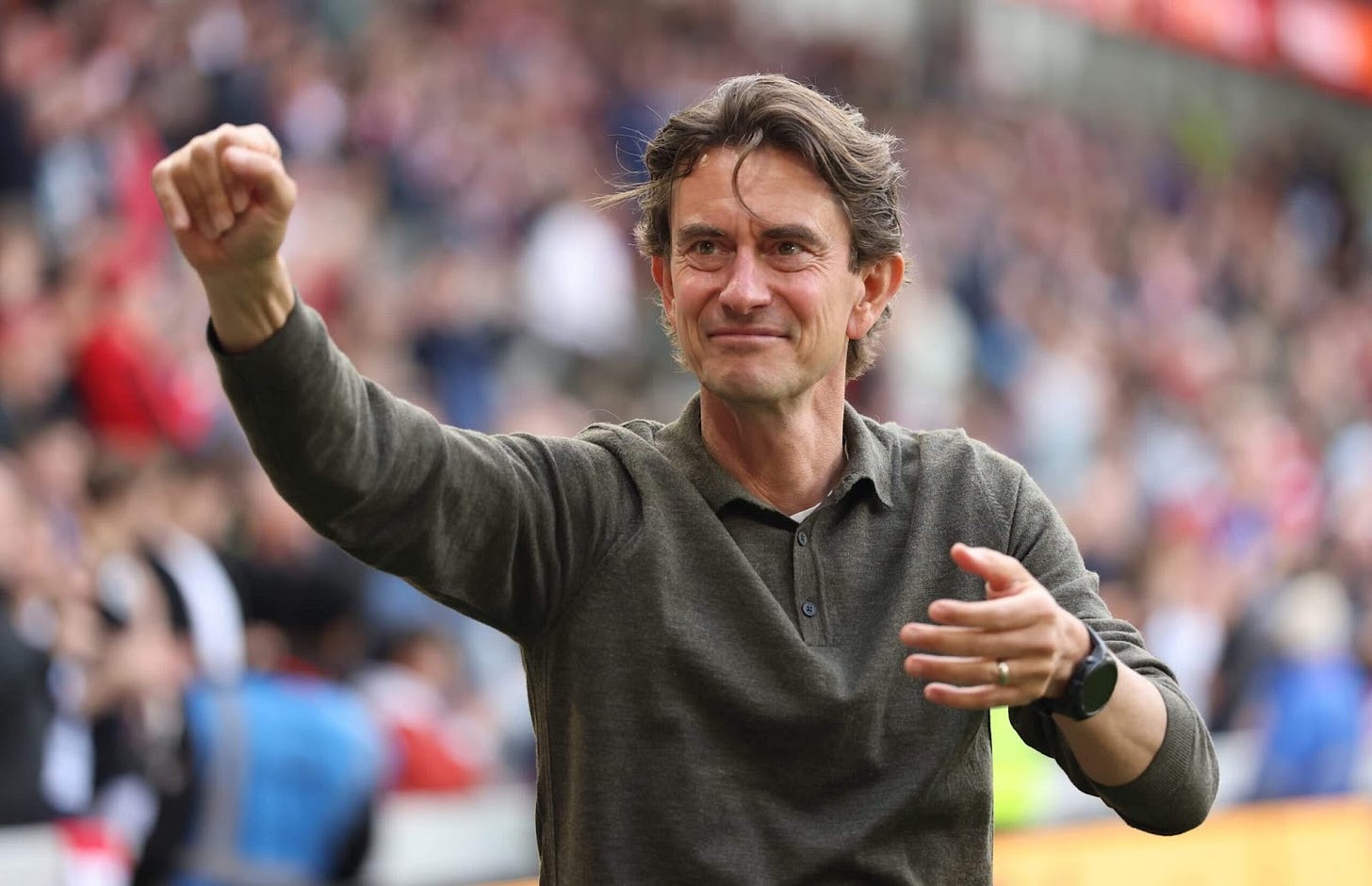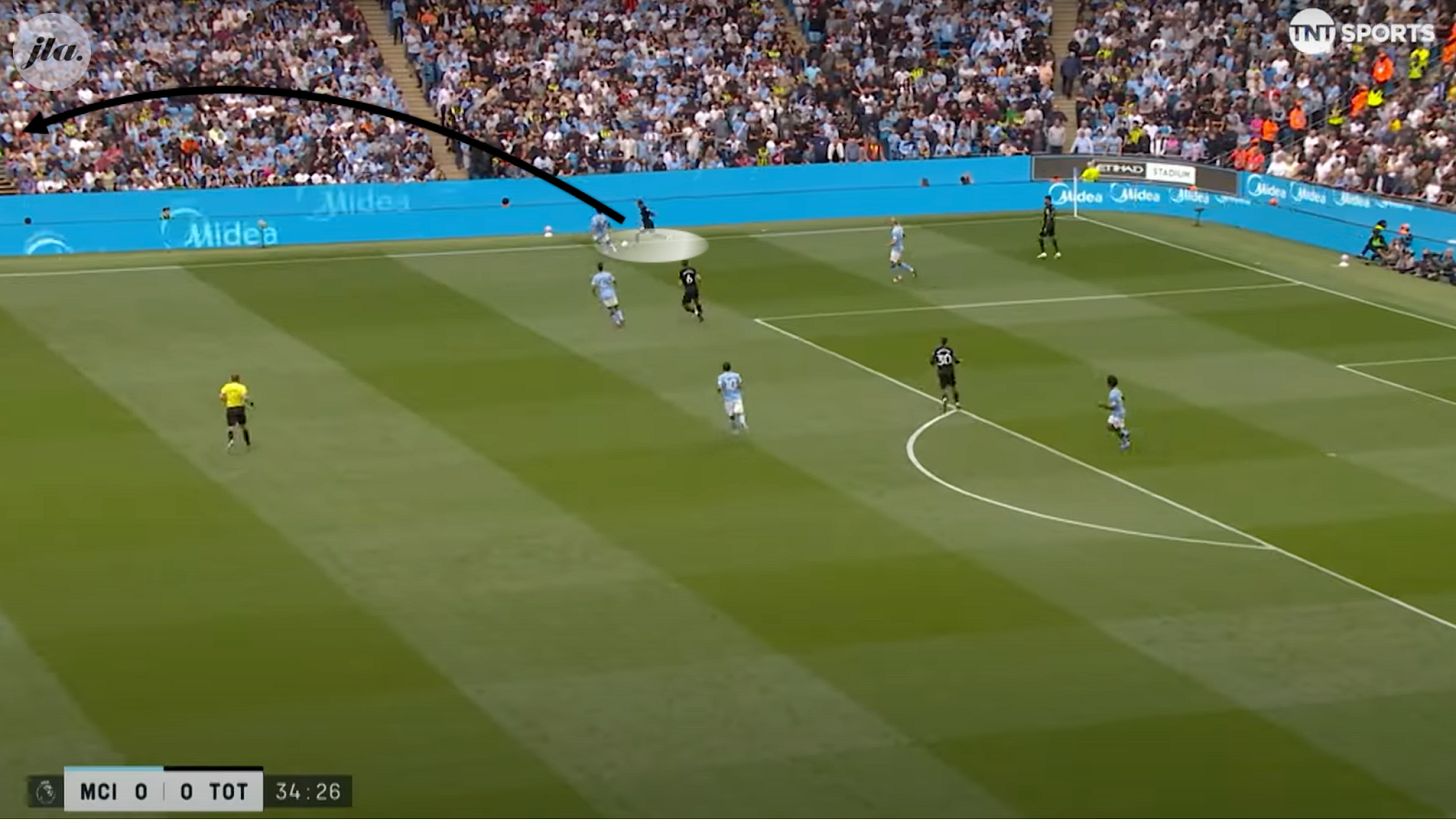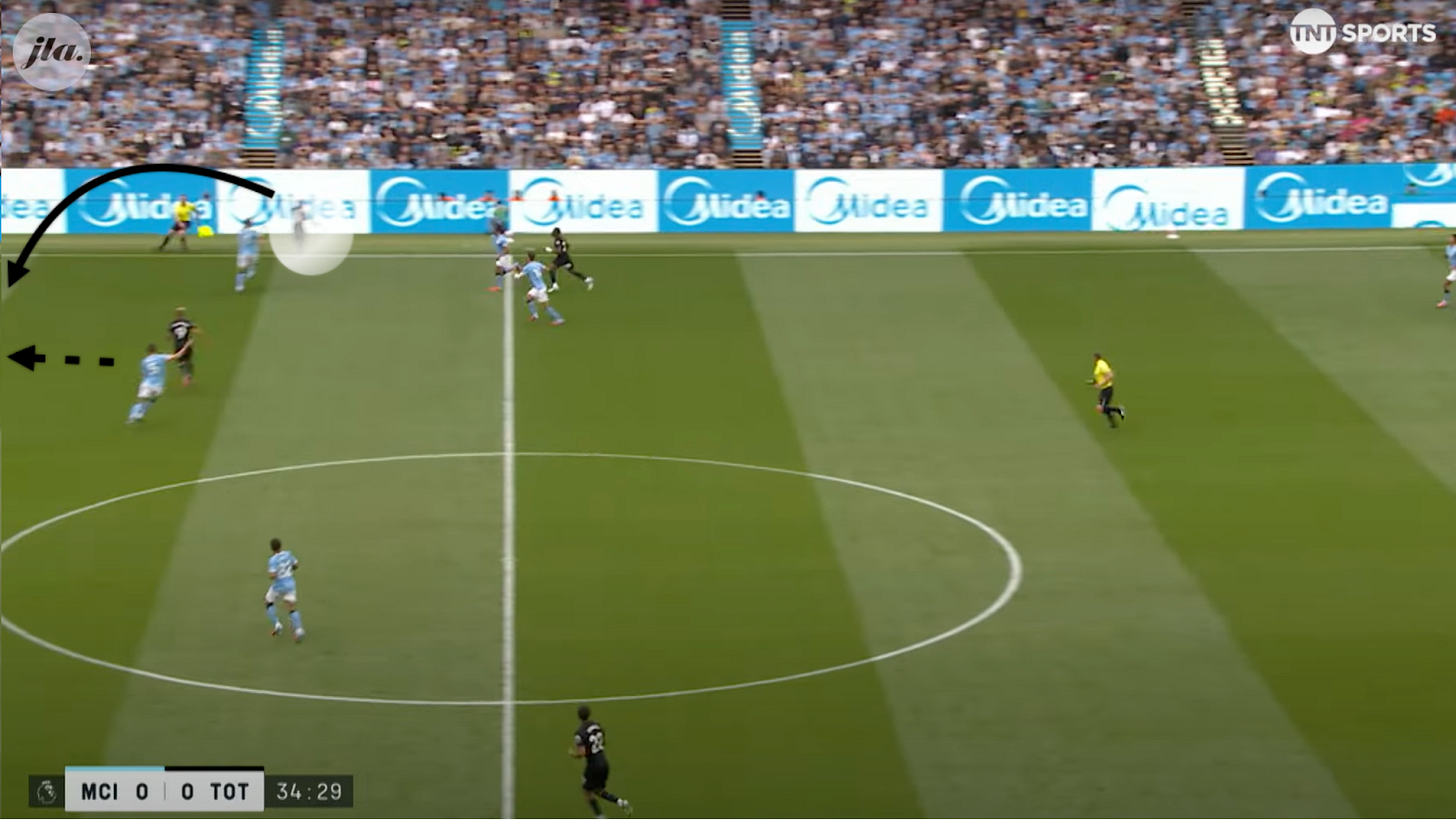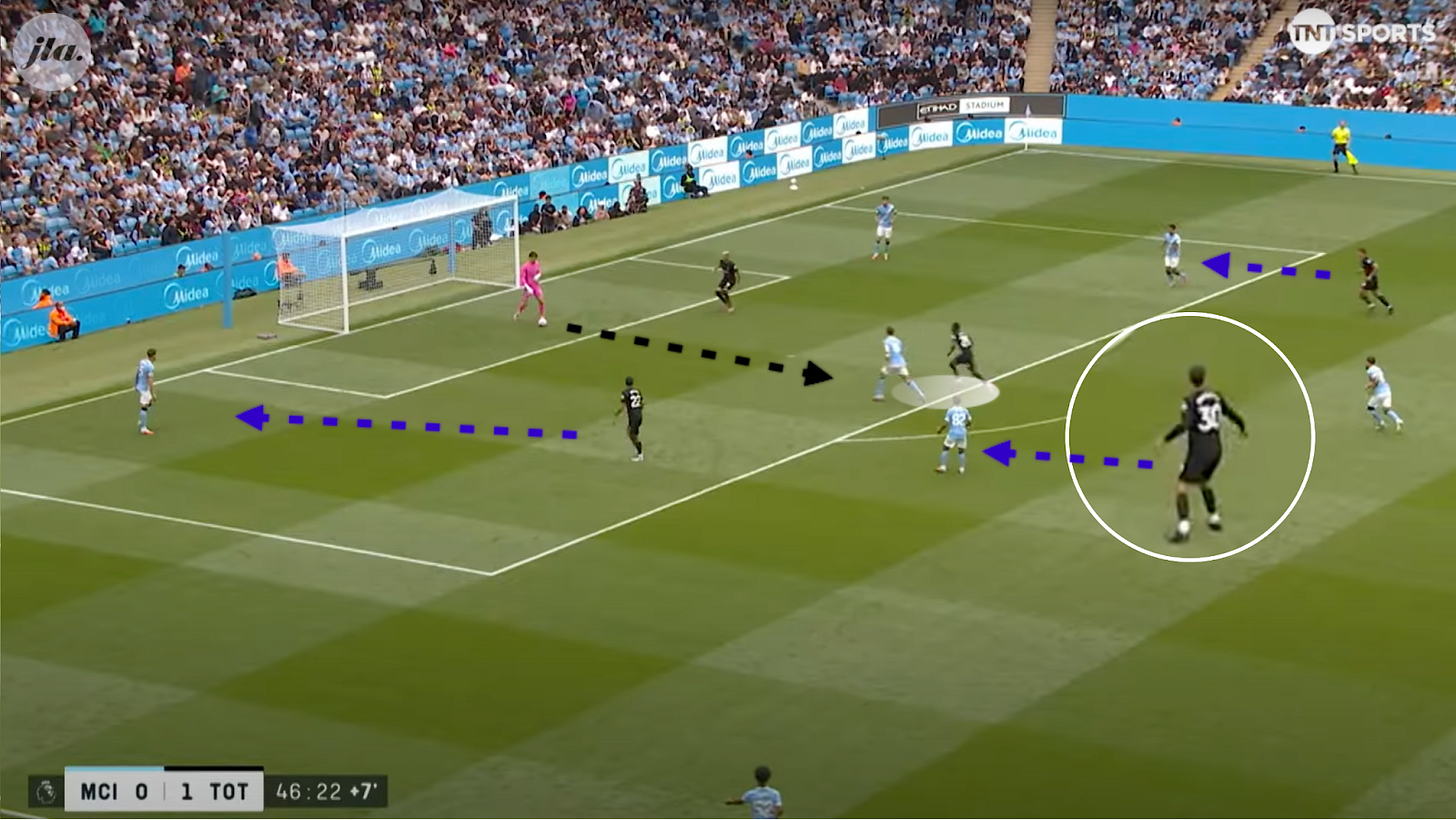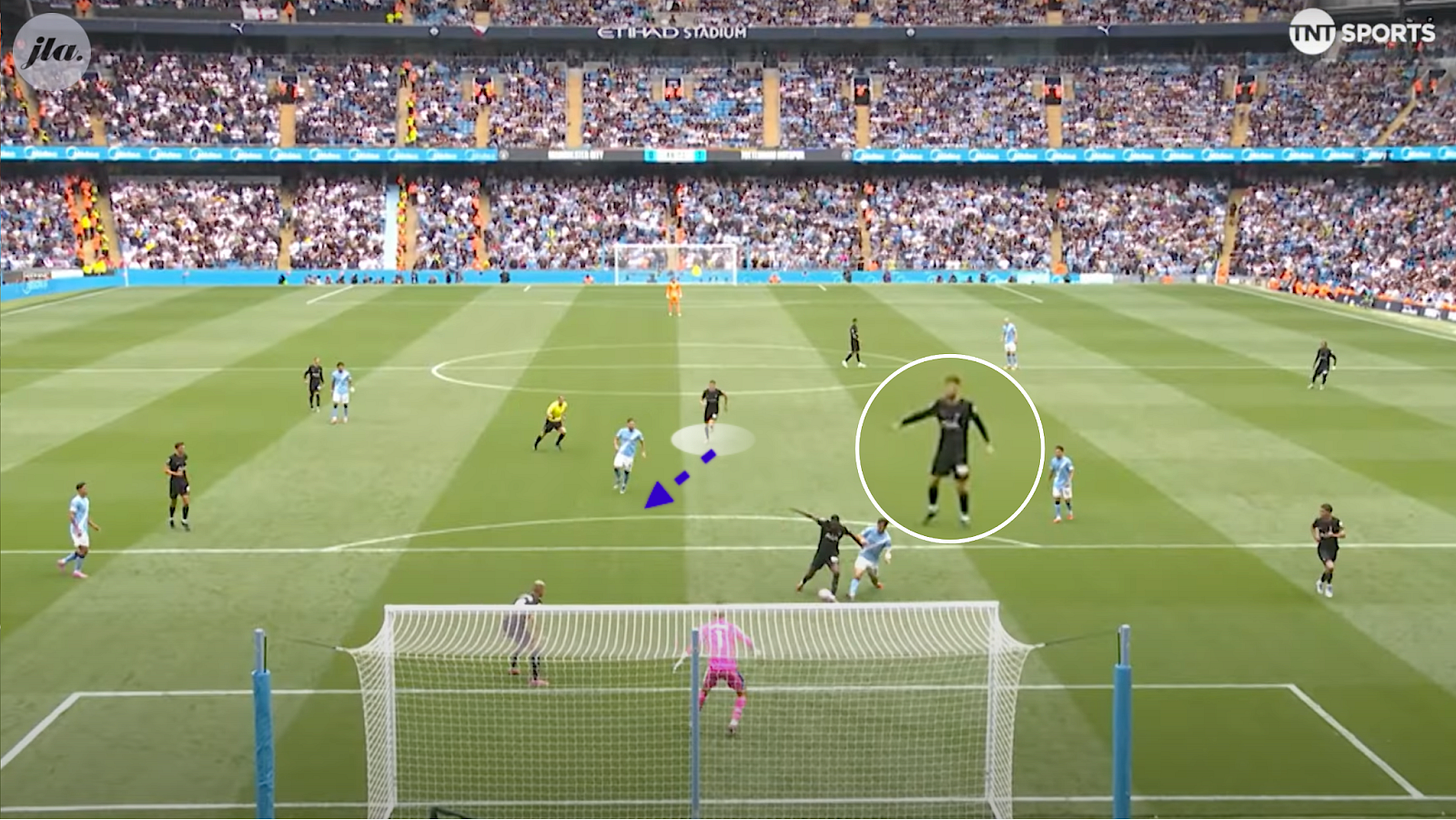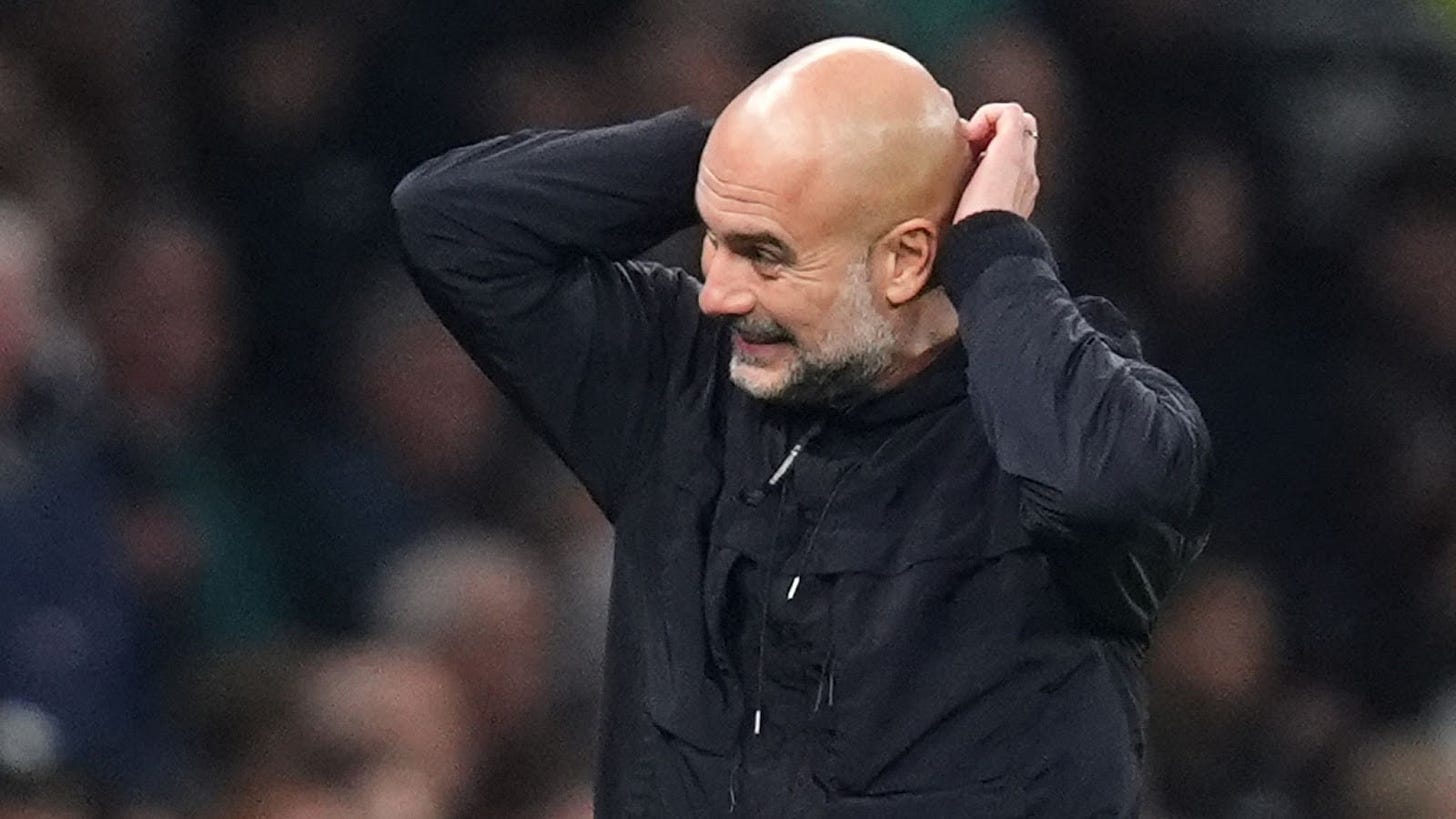How Spurs Stunned City, Are Chelsea Contenders And Amorim's Big Headache.
Everton vs Brighton and Palace vs Forest also analysed in The Fallout.
On The Fallout this week:
• West Ham vs Chelsea
• Man City vs Spurs
• Everton vs Brighton
• Crystal Palace vs Nottingham Forest
• Fulham vs Man United
West Ham vs Chelsea
Disconnected and Disjointed – West Ham in Disarray
Normally, after such a dominant display Chelsea entertained against West Ham, the focus of the discussion will be on the winning team. Unfortunately, and perhaps harshly on Chelsea, this will not be the case here: West Ham’s terrible display deserves some analysis.
The problems for Potter are plentiful, with in-possession and out-of-possession play proving impotent.
Defensively, West Ham were shambolic. For the first goal, the corner was defended extremely poorly, with Wan-Bissaka losing his man; for the second goal, the same culprit was responsible, with Wan-Bissaka, again, losing his man. (We’ll skip the third goal and get back to that later.) The fourth also arose from a corner that was *shock* defended extremely poorly – the keeper suddenly thinking he’s playing volleyball and not football, palming the ball to Caicedo. The fifth goal (and you might pick up on the trend here), similarly, came from a poorly defended corner.
The analysis when it comes to poor set-pieces is limited, except to say that losing one’s man and a keeper’s lack of aerial presence is critical – and terminal.
Again, this is a slight disservice to Chelsea, who undoubtedly spend training sessions focusing on corners – but, what I really want to concentrate on today is Chelsea’s open play work and West Ham’s inability to deal with Chelsea’s fluid and interchangeable positional play that constantly pulled and dragged players out of position. The third goal is a great example of this.
As we can see, here, Estevao drops deep, gets the ball and quickly offloads it. Todibo, the left-most centreback, follows Estevao. However, with some fast, sharp passes, preceding an explosive turn and pace from Estevao, he gets the wrong side of Todibo and finds himself, as seen in the image below, dangerously running towards goal.
Soucek, a midfielder in the double pivot, now has to drop into defense to cover the rogue Todibo. This opens up plenty of space for Chelsea's attacking players, with Joao Pedro (20) and Fernandez (8), as we can see above, in acres of space.
Ultimately, through some fantastic play from Chelsea – their quick passes and movement relentlessly dragging West Ham’s defense around – Estevao ends up through on goal and plays a ball into Fernandez who easily puts away the third.
This happened routinely throughout the game. West Ham’s defensive frailties arose from their confusion and uncertainty over which Chelsea player they were responsible for marking.
In-possession, West Ham weren’t much better.
Typically one of the wingbacks, Wan-Bissaka (29) and Diouf (12) would find themselves progressing the ball in wide areas (as we can see from their average positions), but they would find themselves with no teammates to support them, resulting in them running down blind corridors. As was equally common, Wan-Bissaka would link up with Bowen (20), who would, through some brilliant ballwork, body positioning and strength, ride tackles and progress the ball – but who would also find himself isolated.
West Ham’s Average Positions vs. Chelsea
We can see this evidenced from their average positions, especially noting how isolated the two wingbacks are: perfectly illustrating West Ham’s disconnect between players and their lack of cohesiveness.
The goal is a pity – an unwarranted consolation – the result of a brilliant strike from Paqueta (and maybe questionable keeping from Sanchez), who took the gamble *wink wink* and managed to score from a 0.01 xG chance.
There are some serious concerns for West Ham (and for Potter), who must not only fix their weaknesses in midfield, probably by signing a more athletic, combative player, but also must rectify their patterns of play and positional build-up.
Are Chelsea Title Contenders?
When it comes to Chelsea, at this point in time, they are still hard to judge (sorry for the clickbait title). Sure, they scored 5 goals against West Ham, but this West Ham team is really bad. Really bad.
Interestingly, however, this game marked a stark contrast from the tactics Maresca employed in Chelsea’s game against Crystal Palace. Instead of Reece James starting, Malo Gusto replaced him. James, against Palace, inverted and tucked into midfield. This was a problem against Palace: leading to too many players in central areas without a creative spark. The solution, therefore, was to keep the fullbacks wide and allow a more naturally attacking player to roam the half-spaces.
In-possession, in the attacking third, this is what it looked like, a 3-1-6:
The wide players, Neto and Gusto, hold the width, occupying the opposing wingbacks whilst the two 10s, Estevao and Fernandez, tuck in. This causes a headache for the West Ham defenders (as we saw above in West Ham’s defending of the third goal). By overloading the final third and allowing Estevao and Fernandez a more free, roaming role, West Ham’s back-3 is in two minds of whether to press and shut-down the two 10s or maintain position.
Chelsea’s best passages of play came from utilising this tactical strategy, exploiting this uncertainty and hesitancy.
This tactical flexibility from Maresca, who recognised Chelsea’s creative issues against Palace and effectively addressed them, is promising. If they are going to challenge, this adaptability will be essential.
Man City vs Spurs
Frank: Precipitous and Pragmatic
It would be fair to say that Spurs are Pep’s bogey team: no team has beaten Pep Guardiola’s Man City more often.
When asked about his team's solid performance during the half-time interval, Thomas Frank attributed it to “being brave”, further noting that, if they were to take anything away from this game, they would have to continue to “be brave”. They did so, and confidently won the game. But what does this mean – how exactly did they perform “bravely”?
We can broadly chalk it up to their in-possession and out-of-possession work: the bravery in-possession leading to the first goal and bravery out-of-possession leading to the second.
In-possession, Spurs played a very direct form of football; put simply: pump it up to the attackers and win the first and second balls. Man City, despite the result on paper being very dominant, struggled with this against Wolves last week, often getting hit on the break after losing the first and second ball.
Spurs showed bravery by deliberately baiting City’s press.
For the first goal, Man City pressed aggressively.
Spurs allowed this to happen, drawing them in. Counter-intuitively, instead of their attackers dropping deeper to provide passing outlets that would enable Spurs to play through the press, the attackers do the opposite: pushing up the pitch, stretching it laterally. And so, when the long ball is played by Porro, several Spurs attackers are in position to contest the ball. Sarr manages to win the first ball and flicks it brilliantly into Richarlison’s path.
This is risky (hence the bravery involved) because if they lose these balls, with so many players committed forward and the huge amount of space in midfield, Man City would be able to freely progress the ball towards an accessible Spurs defense.
Out-of-possession, Spurs pressed really aggressively. Take a look at the press that caused the second goal:
Initially this doesn’t seem totally out-of-the-ordinary. Man City are playing quite narrowly, therefore the Spurs players are similarly narrow. This screenshot, however, fails to do justice to the aggressiveness of their press. Above, I’ve magnified Bentancur, who seems to be gesturing for someone to pick-up Cherki (who’s to the left of him).
From the behind-the-goal camera angle we can see the player who Bentancur is gesticulating at.
Van de Ven. The Spurs centreback is busting a gut to shut down Cherki who was close to the edge of his own box. What initially appears to be an unprompted mistake from the keeper, this only comes about because of this aggressive press. This resulted not only in the second goal, displayed above, but also disrupted Man City’s normal fluidity and ability to play through the lines.
Both this bravery out-of-possession and in-possession, a display of Frank’s precipitous yet pragmatic footballing tactics, completely enabled Spurs to nullify Man City – something rarely achieved against City.
Problems For Pep?
In terms of Man City displays, this was particularly a poor one. You could possibly (and somewhat fairly!) chalk it up to Spurs’ great performance – and yet, this Man City team looked very disjointed.
Personnel-wise, the Man City players had an off day. Oscar Bobb (an obvious talent), seemed lost out-of-possession, with Haaland repeatedly appearing to tell Bobb to press. Cherki looked lost out-of-possession and in-possession, seemingly receiving constant instructions from Pep. The injury to Aït-Nouri also undoubtedly affected Pep’s plans – Ake unable to replace the lost athleticism. Lewis, normally instructed to invert into midfield, has consequently been told to remain wide because of the plethora of Man City players in the centre of the pitch; but there are questions over whether this is Lewis’ best role.
Generally, in an attempt to rectify their problems in transition from last year, Pep has been using more centrally positioned players, thereby forcing the attacking team to play down the wings (a much less dangerous position than in the centre of the pitch). But this has led, as we saw today, to players getting in each other’s ways – unsure where they were supposed to position themselves.
Should Man City fans be worried?
Maybe. Even though this was an uncharacteristically poor Man City performance, where loose passes and disjointedness were rife – there are serious questions surrounding their defensive solidity, and whether the excessive use of central players to help solve their lack of defensive solidity stifles their creativity.
In a game where Spurs were quite easily able to bypass their midfield, winning the long balls – Pep will have to do some thinking to solve these problems: but if anyone can solve this, it’s Pep.
Paid subscribers can read our analysis on Everton Brighton, Plaace vs Forest and Fulham Man Utd. 👇
Keep reading with a 7-day free trial
Subscribe to JLA to keep reading this post and get 7 days of free access to the full post archives.




